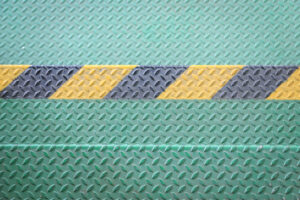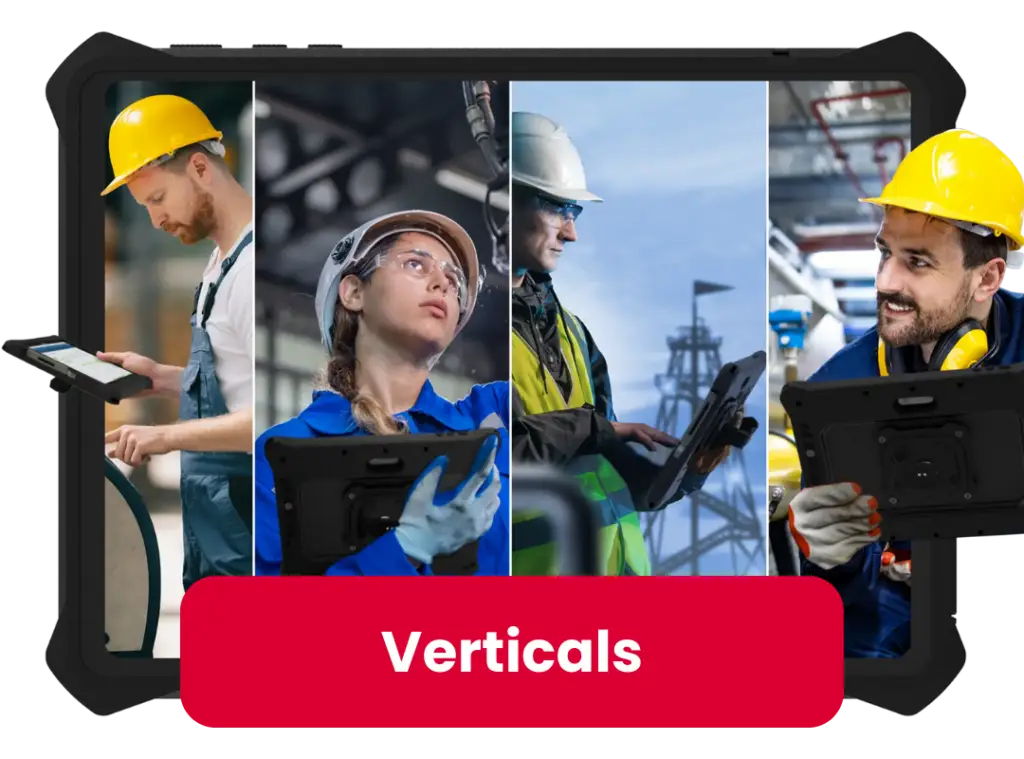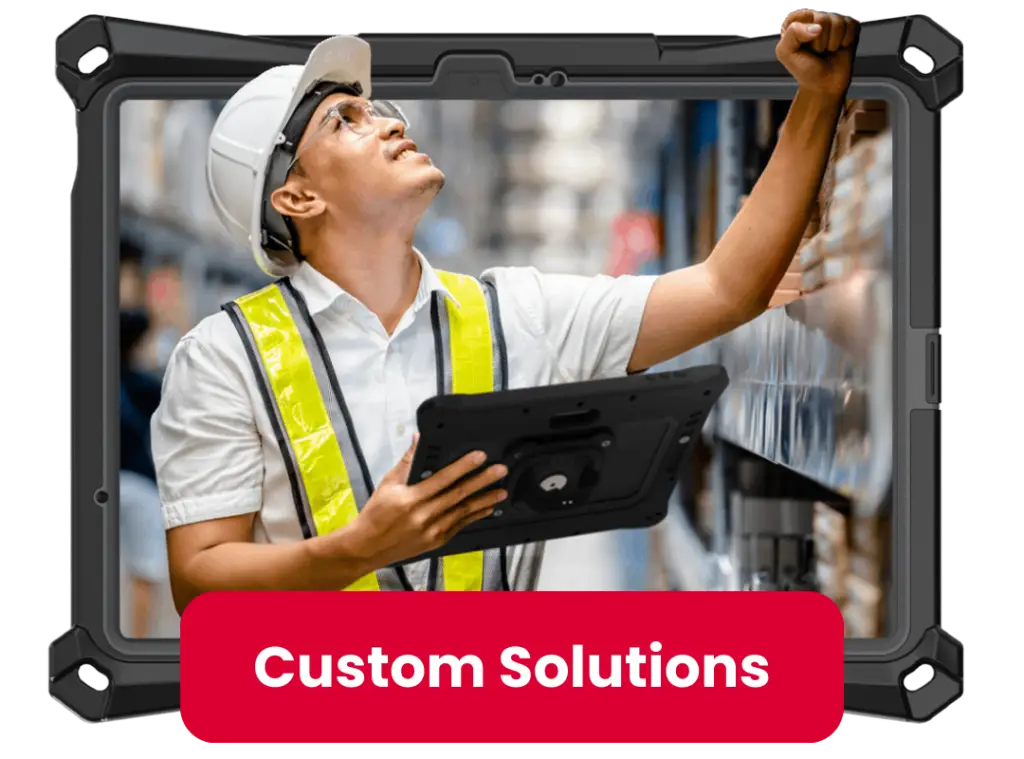Building Smarter: How Digital Workflows Are Transforming Construction
From blueprints to punch lists, digital workflows are reshaping how construction teams collaborate, manage data, and deliver projects on time. Here’s how rugged mobility solutions help make it all possible.
The Rise of Digital Workflows in Construction
The construction industry is undergoing a rapid digital transformation. Paper-based processes are being replaced by cloud-connected platforms, mobile apps, and real-time data sharing. From jobsite coordination to safety compliance, digital workflows are helping teams work faster, smarter, and more collaboratively.
According to McKinsey, construction firms that adopt digital tools can improve productivity by up to 15% and reduce project costs by up to 6%. These gains come from streamlining communication, automating documentation, and enabling real-time decision-making.
Digital Blueprints and BIM Access: The Foundation of Modern Construction
Paper blueprints are a bottleneck. They’re static, prone to damage, and outdated as soon as revisions hit the office. Digital blueprints and Building Information Modeling (BIM) have changed that. Today, field teams can access real-time models on rugged tablets, ensuring they always work from the latest design.
Why this matters:
- Error Reduction: BIM reduces design clashes by up to 90%, cutting rework costs dramatically.
- Faster Approvals: Digital models speed up stakeholder sign-offs and regulatory reviews.
- Lifecycle Value: BIM data supports facility management long after project completion.
According to McKinsey, BIM adoption can cut rework by 25% and improve delivery timelines by 15%
Punch Lists and Task Management: Closing the Gap Faster
Punch lists are notorious for dragging out closeout. Paper-based systems create confusion, missed items, and costly delays. Digital punch list software like Procore and PlanGrid eliminates these inefficiencies.
Key benefits of digital punch lists:
- Speed: Closeout time drops by up to 50%.
- Clarity: Photos, videos, and voice notes remove ambiguity.
- Accountability: Assign tasks with deadlines and track progress in real time.
Safety and Compliance Documentation: Protecting People and Projects
Safety isn’t negotiable, but paper logs make compliance harder than it should be. Digital safety platforms automate inspections, track training, and store records in the cloud.
Why digital safety matters:
- Fewer Incidents: Real-time hazard reporting reduces accidents by up to 20%.
- Efficiency: Automated workflows cut admin time by 30–40%.
- Audit Readiness: Instant access to OSHA-compliant records avoids fines.
Inventory and Asset Tracking: Stopping Loss Before It Starts
Lost tools and materials cost contractors thousands every year. RFID and barcode systems bring real-time visibility to jobsite assets.
Benefits of RFID tracking:
- Time Savings: Inventory checks are up to 80% faster.
- Loss Prevention: Theft and misplacement drop significantly.
- Better Utilization: Data insights prevent over-purchasing and idle equipment.
Field Reporting and Photo Documentation: Building a Visual Record
Disputes and rework often stem from poor documentation. Digital photo workflows create a searchable visual record of every stage of construction.
Why it works:
- Dispute Protection: Time-stamped images provide clear evidence.
- Early Detection: Issues are caught before they escalate.
- Transparency: Remote stakeholders can monitor progress virtually.
Photo documentation reduces rework costs by up to 25% and accelerates issue resolution from weeks to days.
The ROI of Digital Workflows in 2024–2025
Construction is no longer just about bricks and mortar—it’s about data, mobility, and real-time collaboration. Companies that embrace digital workflows are seeing measurable returns across productivity, cost, and project delivery.
Proven Business Impact
- Productivity Gains: Digital leaders in construction report higher bid win rates and stronger financial performance, with 82% of tech-forward firms feeling positive about profitability compared to 52% of low-tech peers
- Cost Savings: Firms using mobile technology and cloud-based workflows reduce printing costs, rework, and delays. One contractor reported saving $1.8 million annually by adopting iPads for field operations, including $10,000 per year in printing alone
- Faster Delivery: Real-time updates and mobile collaboration tools help projects finish sooner. Autodesk’s 2025 report shows that companies with advanced digital workflows consistently outperform in schedule adherence and risk management
Why iPads Are Central to This Shift
iPads have become a cornerstone of modern construction workflows:
- Instant Access: Blueprints, RFIs, and punch lists are available on-site without delays.
- Enhanced Communication: Virtual walkthroughs and AR tools keep clients and crews aligned.
- Integrated Safety: Apps simplify compliance reporting and hazard tracking, reducing incidents.
Investment Trends
Construction technology investment remains strong, with billions flowing into mobile platforms, AI-driven project management, and connected jobsite solutions. Analysts predict continued growth as firms seek resilience and efficiency in a competitive market
5 Challenges of Mobile Tech on the Jobsite
While tablets are central to digital workflows, construction sites are some of the harshest environments for technology. Unlike an office setting, the jobsite introduces a unique combination of physical, environmental, and operational challenges that can quickly compromise consumer-grade devices.
1. Drops and Impact Damage
Construction sites are dynamic, with workers constantly moving between scaffolding, ladders, and uneven terrain. A single accidental drop onto concrete can crack screens, damage internal components, or render a device unusable. Even protective consumer cases often fail to meet the durability standards required for repeated impacts.
2. Dust, Dirt, and Water Exposure
Dust from cutting, drilling, and demolition is pervasive on jobsites. Fine particles can infiltrate device ports and cooling systems, leading to overheating or short circuits. Add in exposure to rain, mud, and accidental spills, and it’s clear why IP-rated protection is critical for maintaining device integrity.
3. Vibration and Heavy Equipment
Tablets often share space with heavy machinery like excavators and jackhammers. Continuous vibration can loosen internal connections, damage hard drives, and shorten device lifespan. Mounting solutions that absorb shock are essential for tablets used in vehicles or attached to equipment.
4. Extreme Temperatures
Outdoor projects expose devices to temperature extremes—from freezing mornings to scorching afternoons. Consumer tablets may shut down or throttle performance when operating outside their safe temperature range, causing workflow interruptions at critical moments.
5. Gloved or Wet-Hand Use
Construction workers frequently wear gloves or have wet, dirty hands, making capacitive touchscreens difficult to operate. Devices without glove-touch capability or rugged accessories can slow down data entry and force workers to remove protective gear, creating safety risks.
Rugged Mobility: Enabling Reliable Digital Workflows
Digital workflows only deliver value when the devices powering them remain operational. In construction, where conditions are unpredictable and harsh, consumer-grade tablets often fail, which leads to costly downtime and data loss.
Rugged mobility solutions are not just accessories! They are critical enablers of productivity, safety, and cost control.
Downtime Is Expensive
Downtime is one of the most significant hidden costs in construction. According to industry data, only 8.5% of construction projects finish on time and on budget, and equipment downtime is a major contributor
Every hour of lost productivity ripples through the schedule, delaying inspections, pushing back milestones, and increasing labor costs.
- Direct Costs: Idle crews and halted work can cost thousands per hour.
- Indirect Costs: Missed deadlines lead to penalties, strained client relationships, and reputational damage.
- Compounded Impact: Delays in one phase often cascade into others, multiplying the financial hit.
Experts estimate that downtime rates in construction can account for 20–30% of total project inefficiencies, making it a critical area for improvement.
Device Failure Costs More Than Hardware
When a tablet fails on a construction site, the cost isn’t just the price of a replacement device. The real financial impact comes from lost productivity, disrupted workflows, and safety risks. These hidden costs can quickly escalate into tens of thousands of dollars per project.
The True Cost of Downtime
Unplanned downtime is one of the most expensive problems in construction. Industry experts report that unplanned downtime rates of 20–30% are common, and the financial impact can be staggering. For example:
- A single piece of equipment offline for 360 hours annually can cost $40,000 or more when you factor in lost utilization, rental replacements, and schedule delays.
- For a contractor with 50 assets, downtime-related losses can exceed $2 million per year
Now apply this logic to digital workflows: when a tablet fails, it halts access to BIM models, punch lists, and compliance checklists. The ripple effect is similar to equipment downtime. Crews stop working efficiently, decisions are delayed, and costs rise.
Key Features That Drive Reliability
1. MIL-STD-810H Drop Protection
- What It Is: A U.S. military standard with 29+ environmental tests, including shock, vibration, and repeated drops from 4 feet onto concrete
- Why It Matters: Construction sites involve ladders, scaffolding, and uneven terrain. A single drop can destroy a consumer tablet, but MIL-STD-810H-certified cases ensure survival under real-world abuse.
- The Joy Factory Advantage:
aXtion Bold MP and aXtion Pro MP meet MIL-STD-810H standards, protecting your investment and workflow continuity.
2. IP54/IP68 Sealing
- What It Is:
- IP54: Protection against dust and water spray.
- IP68: Complete dust-tightness and resistance to continuous water immersion (up to 1.5 meters for 30 minutes).
- Why It Matters: Dust from cutting and drilling can infiltrate ports, while rain or spills can short-circuit devices. IP-rated sealing ensures uninterrupted operation in these conditions.
- The Joy Factory Advantage:
aXtion Pro MP offers IP68 waterproofing, making it ideal for outdoor and heavy-duty environments.
3. MagConnect® Mounting Ecosystem
- What It Is: A patented magnetic mounting system for quick, secure attachment to vehicles, scaffolding, and workstations.
- Why It Matters: Hands-free operation improves safety and efficiency. Workers can view BIM models or punch lists without juggling devices.
- The Joy Factory Advantage:
MagConnect mounts integrate seamlessly with aXtion cases for maximum flexibility.
4. Ergonomic Hand Straps & Kickstands
- What It Is: Rotating straps and multi-angle stands designed for gloved use.
- Why It Matters: Workers often wear gloves or have wet hands, making standard tablets hard to grip. Ergonomic accessories reduce fatigue and prevent drops.
- The Joy Factory Advantage:
Built-in straps and stands allow for secure handling and stable viewing, even in challenging conditions.
The ROI of Rugged Mobility
- Reduced Downtime: Rugged tablets prevent workflow interruptions caused by device failure.
- Lower Total Cost of Ownership: Extended device life reduces replacement costs.
- Improved Safety & Compliance: Real-time access to safety protocols and reporting tools minimizes risk.
- Enhanced Productivity: Instant access to BIM models, punch lists, and digital forms reduces rework and accelerates decision-making
Your Partner in Industrial Mobility
The Joy Factory is a leader in industrial and enterprise-grade tablet solutions.
aXtion rugged cases and MagConnect mounting systems provides robust protection and secure, ergonomic positioning, turning your tablet into a mobile workstation.
Learn more about The Joy Factory’s solutions for construction.







